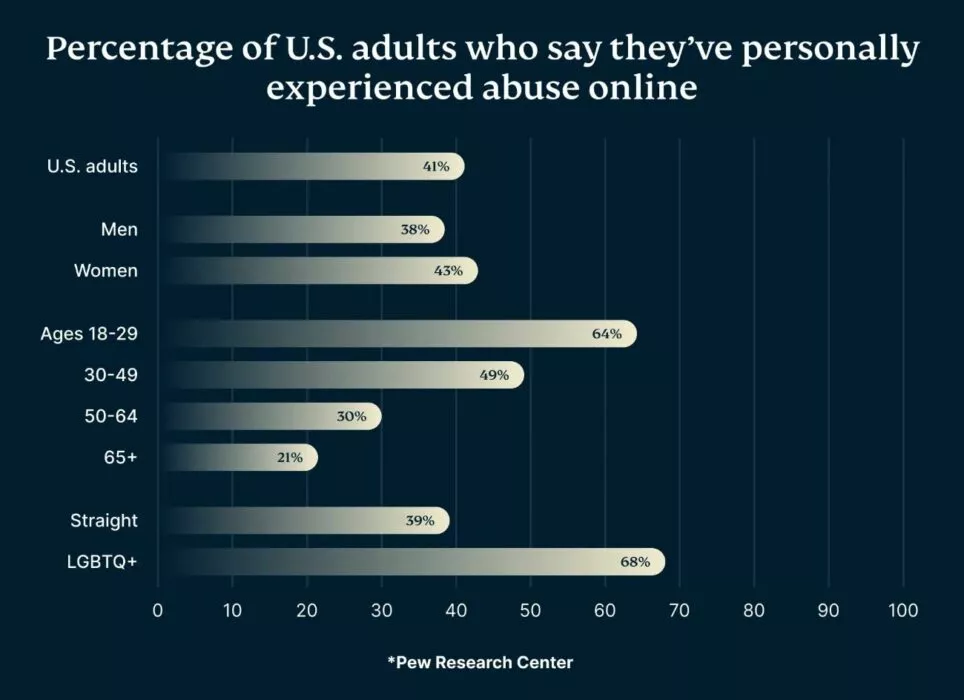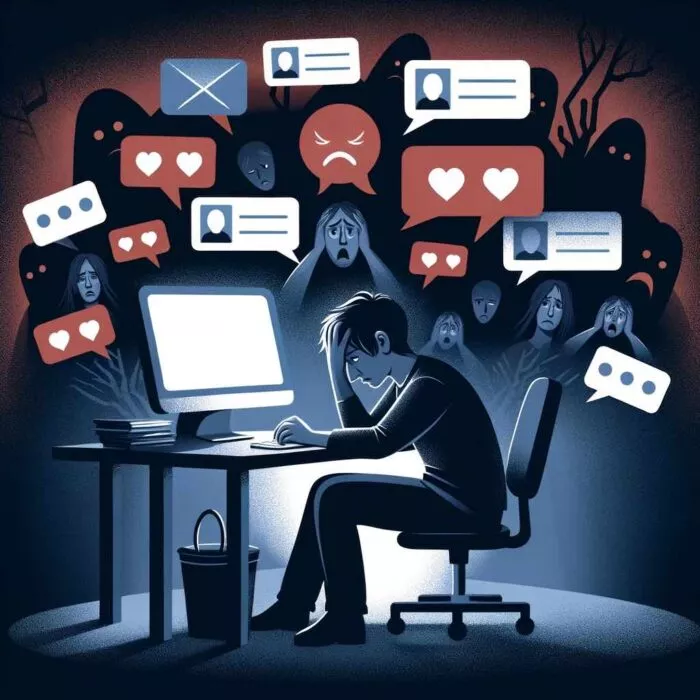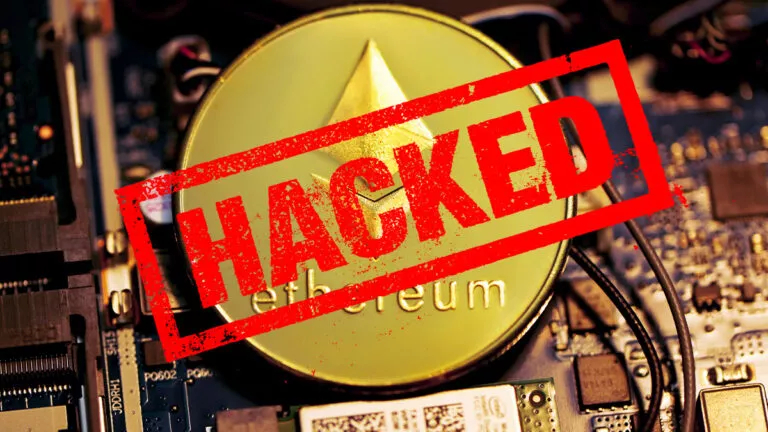Navigating The Psychological Impact of Online Harassment nd Stalking

The internet offers a platform for connection, communication, and collaboration, but it also opens the door to darker experiences such as online harassment and stalking. These threats can cause long-term emotional harm, disturbing lives, and damaging mental well-being. This article aims to shed light on the psychological impact of online harassment and stalking and overcoming these modern-day challenges.
An overview of online harassment and stalking
Online harassment and stalking are serious problems that many people face on the internet. Below is a detailed explanation of these issues which helps us learn how to deal with them and support those affected.
Digital Harassment
- Digital harassment refers to harmful behavior conducted through electronic means, such as social media, emails, or text messages.
- Signs of digital harassment include receiving threatening or abusive messages, noticing unauthorized access to personal accounts, and experiencing a sudden surge of negative comments on social media.
- The effects of digital harassment lead to emotional distress, anxiety, depression, and a feeling of helplessness.
Cyberstalking
- Cyberstalking is the use of the internet or other electronic means to stalk or harass an individual, group, or organization.
- Signs of cyberstalking include receiving numerous unwanted messages, noticing your online activity is being monitored, discovering unauthorized access to your accounts, and finding your personal information shared online.
- The effects of cyberstalking can be severe, causing fear, anxiety, and a constant feeling of being watched. Consequently, it disrupts daily life and harms mental health.
A significant number of people have experienced online harassment and digital stalking. According to a Pew Research Center study, 41% of U.S. adults have been harassed online, with 20% experiencing stalking. In the UK, 51% have been cyberbullied and 36% have been trolled. Young women are especially at risk, with a third of women under 35 experiencing harassment, and some facing stalking and threats. Additionally, about 1 in 5 Americans and 25% of Brits have reported being cyberstalked.

Online abuse and its psychological impact
Cyberstalking and online harassment cause more than just immediate stress. Let’s discuss the deep emotional scars left by online abuse and how it can affect people for a long time.
- Trouble sleeping: It’s a common problem for those dealing with cyberstalking and harassment. The stress from these situations can mess up sleep schedules, causing insomnia or bad dreams. Studies in the Journal of Psychiatric Research show that people facing online harassment often have more sleep issues, which can make it harder for them to stay healthy and deal with stress.
- Post-Traumatic Stress Disorder: In some serious situations, cyberstalking can cause symptoms similar to PTSD, like flashbacks, extreme worry, and thoughts that won’t go away about the harassment.
- Fear and Unease: Persistent harassment can make victims feel constantly worried and scared, always expecting another attack. This can cause anxiety disorders and sudden, intense fear, making it hard to do daily tasks.
- Effect on Confidence and Connections: The widespread online abuse can lower self-confidence and make people feel alone. Studies show that those who’ve faced online abuse trust others less and are hesitant to talk to people online again.

Stage 1: Flood of Unwanted Messages
When cyber harassment starts, it often begins with a flood of messages even if they try to stop it, the messages keep coming. According to ExpressVPN’s guide to combat cyberstalking, address this and prevent further harm, individuals can implement the following strategies –
- Privacy and passwords: Keep your social media profiles private and use strong, different passwords for each account. Add an extra layer of security with two-factor authentication (2FA), and never share your one-time passwords (OTPs) with anyone.
- Keep an eye out: Keep checking your social media for any signs of unauthorized access or strange connection attempts. If you notice anything unusual, take quick action to address it, as social media platforms usually warn you about suspicious activity.
- Activate a VPN: Use a good VPN, such as ExpressVPN to encrypt your internet connection and mask your IP address, safeguarding your online activity from interception and preventing stalkers from tracking your location.
Stage 2: Withdrawal from social interactions
In this phase, the harasser aims to isolate the victim from social connections. Measures to prevent this include:
- Inform your network: Make sure friends, family, and coworkers know about the harasser and advise them to ignore any suspicious or harmful messages from your account or fake profiles impersonating you.
- Report fake profiles: Alert the appropriate social media platforms, these platforms usually have protocols for addressing impersonation incidents.
- Enhance security settings: Improve the security of your accounts by updating settings. Enable two-factor authentication (2FA), use strong passwords, and review permissions for apps to prevent unauthorized access.
Stage 3: Direct Physical Harassment
In this phase, online harassment escalates into real-world threats. The stalker may try to confront you in person, showing up unexpectedly at your home, workplace, or usual haunts. Steps to prevent this include:
- Safety Measures: Share your live location with trusted contacts, plan safe commuting routes, and identify nearby public places for refuge.
- Legal Options for Protection: Seek legal guidance to obtain protective orders, which aim to prevent any contact or approach from the stalker.
- Digital Security Measures: Limit the information you share online and regularly monitor your digital footprint. This includes conducting searches on yourself and reviewing your social media profiles and privacy settings.
When sharing personal information online, exercise caution to prevent potential stalkers from exploiting it. Be mindful of what you share, avoiding details like your full name, address, or phone number. Additionally, review and update your social media privacy settings regularly to control who can access your posts and personal information, reducing the risk of online harassment and stalking.
Supporting Those Affected by Online Harassment & Stalking
- Educate Yourself: Learn about digital stalking and harassment to provide informed advice and support.
- Encourage Professional Help: Guide them towards seeking legal, counseling, or cybersecurity assistance.
- Be a Listening Ear: Offer a judgment-free space for them to share their experiences and validate their feelings.
- Provide Resources: Compile a list of organizations and hotlines dedicated to supporting stalking victims.






